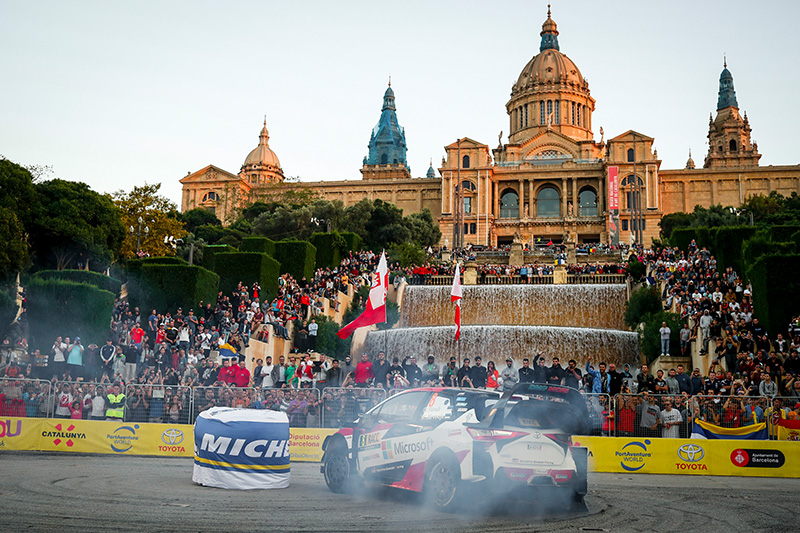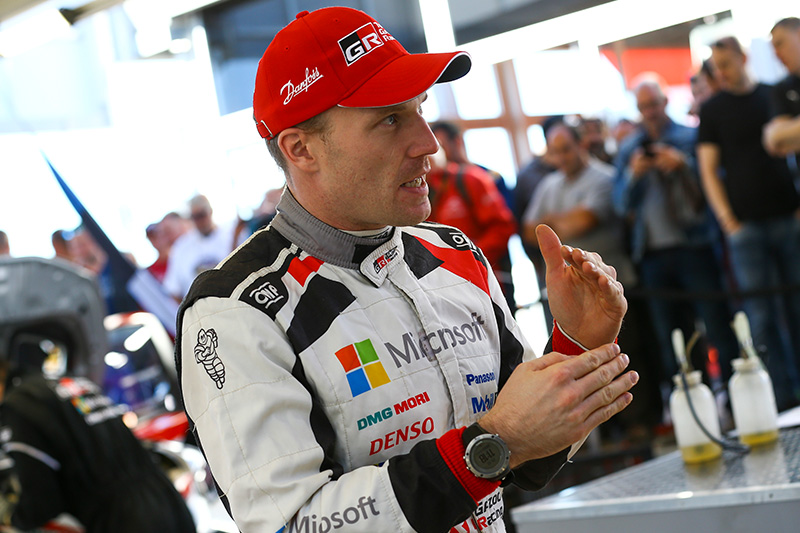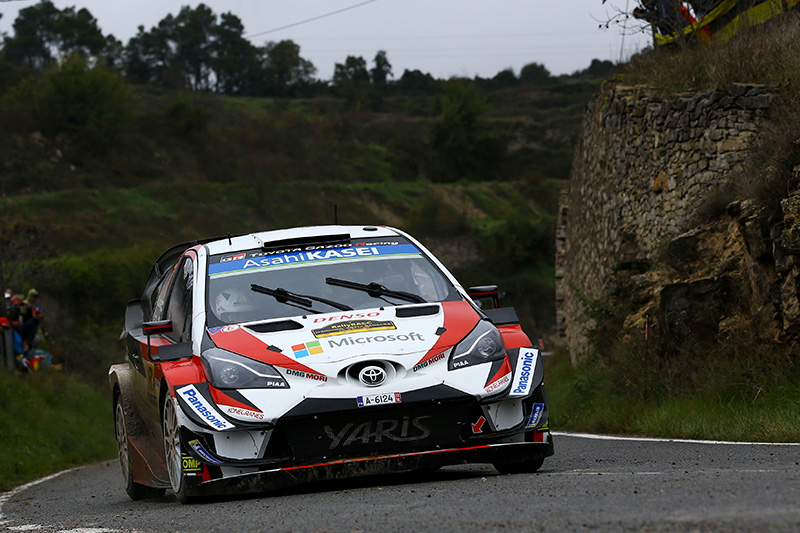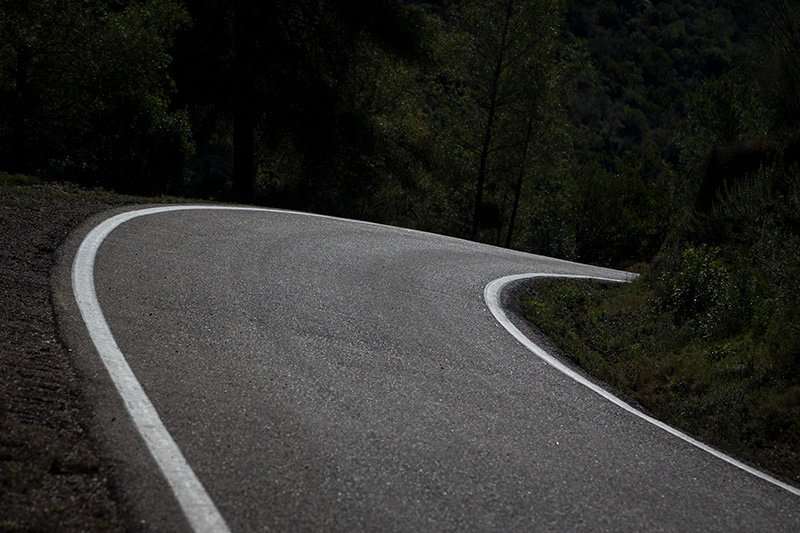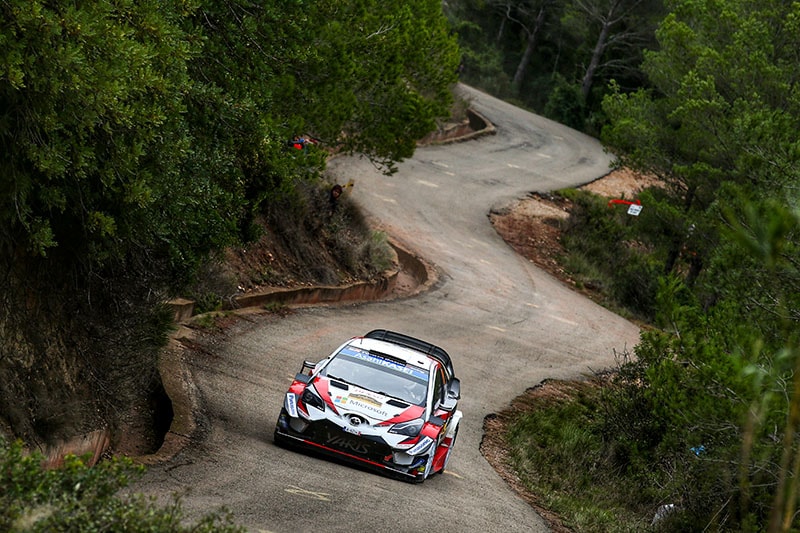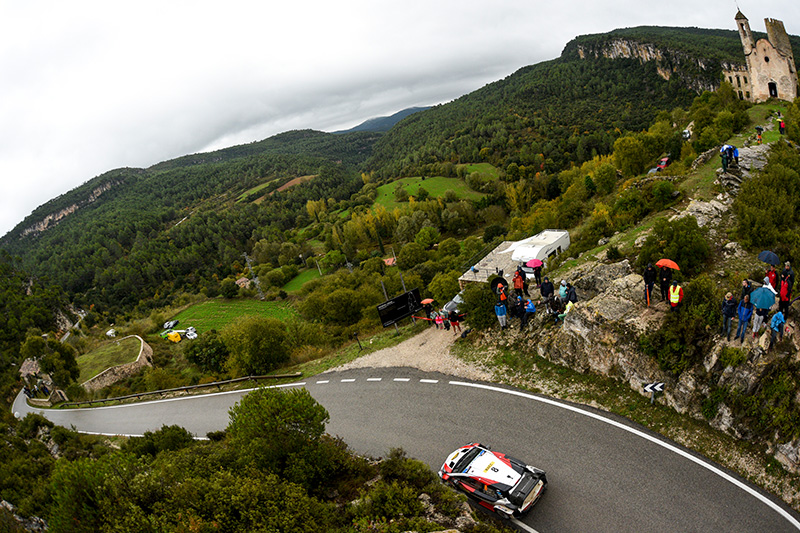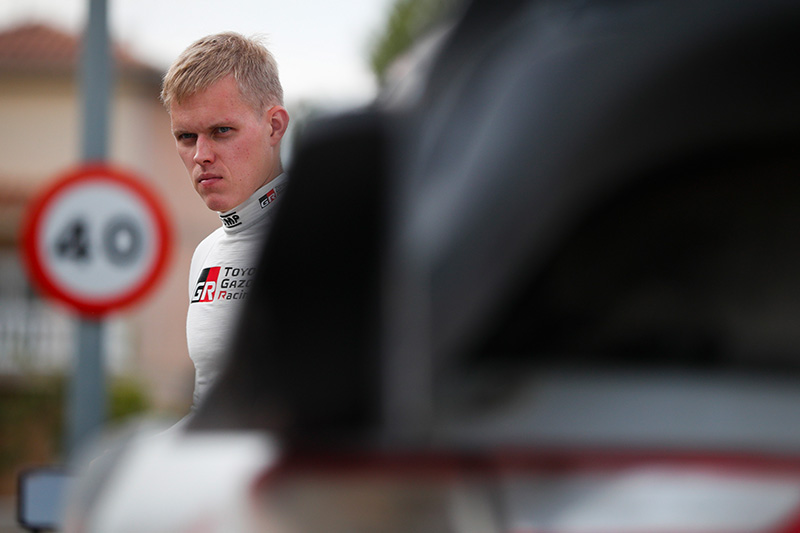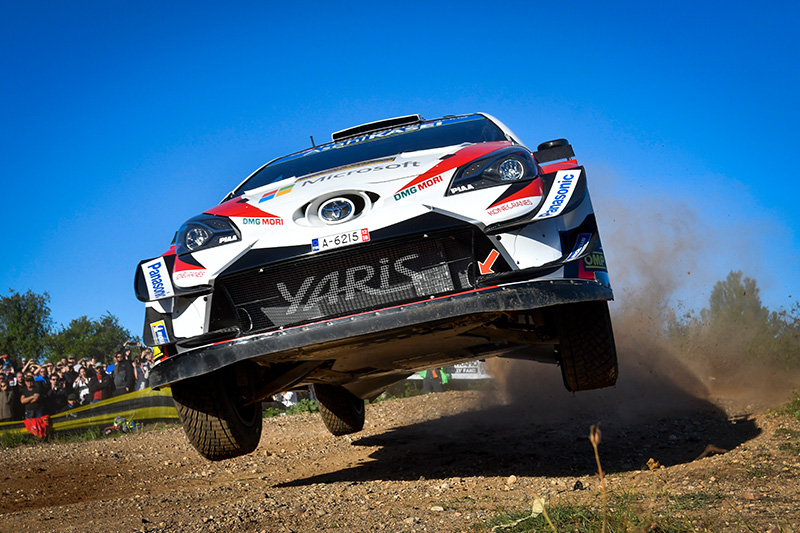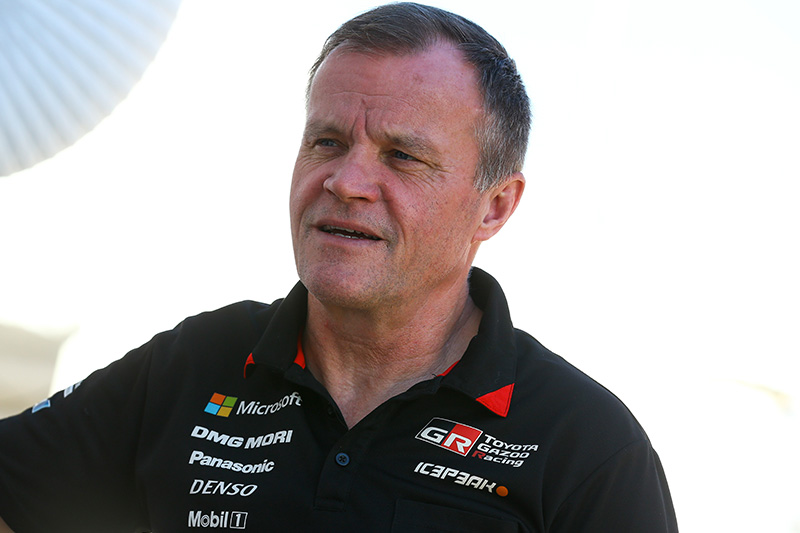RALLY DE ESPAÑA
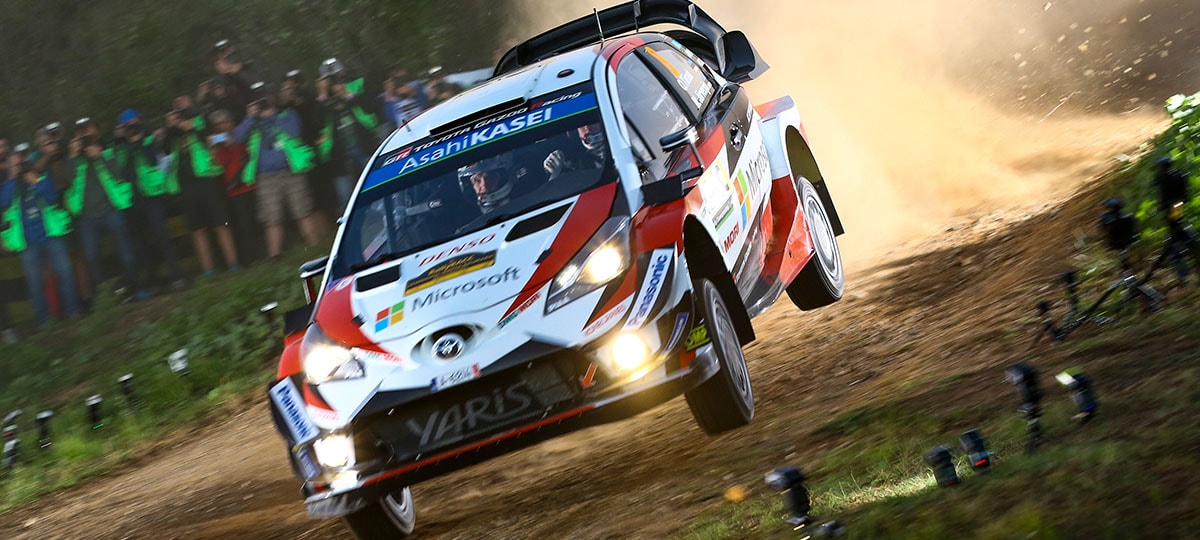
Despite leading for more than half the rally, TOYOTA GAZOO Racing fails to podium
At the only mixed-surface rally on the calendar, what were the causes for the team’s lack of speed?
At the Rally de España, round 12 of the WRC, the TOYOTA GAZOO Racing World Rally Team failed to finish on the podium for the first time since the Rally de Portugal in round 6. Ott Tänak was the highest-ranked driver on the team in sixth place, Esapekka Lappi was seventh, and Jari-Matti Latvala eighth. With all three drivers failing to make the top five, the result was a crushing defeat. However, the performance of the drivers was not as bad as the numbers themselves suggest. After SS1 was cancelled, there were a total of 17 special stages in total. Tänak and Latvala each recorded four stage wins; in addition, Tänak led the rally for seven stages in a row, and Latvala for four stages in succession. Statistically, then the team was in control of more than 60 percent of the rally. And yet, the team still failed to finish on the podium—why was this? It seems that punctures were one of the chief reasons for the displeasing results.
From gravel to tarmac, amid constantly changing conditions
The Rally de España is the only mixed-surface rally on the WRC calendar. The cars are set up for gravel for the first two days, before switching to tarmac specifications for the final two days of the event. At the end of the second day, the setups of the cars are modified over a 75-minute service period, with tires and wheels, suspension, brakes, powertrains, and under guards all replaced or adjusted for tarmac. For this reason, the Rally de España is often considered to be two distinct rallies contested one after the other.
However, the actual conditions are rather more complex. While Days One and Two take place primarily on gravel, the cars also have to negotiate long tarmac sections. Days Three and Four comprise only tarmac, but this year the surface conditions changed frequently between dry, damp, and wet, as a result of rain. Regulations allow each team to choose from three types of tire for tarmac: hard, soft, and full-wet for rain; gravel tires are subdivided into hard and medium. Selecting the optimal tire for the surface conditions is therefore no easy task, and is a test of a team’s overall competence.
Tänak shows impressive pace on gravel to lead the rally
Day Two was held mostly on gravel. Tänak recorded the fastest time on SS2, the first stage of Day Two, and led the rally from SS3 to SS7, the final stage of the day. At the end of the day, Tänak’s lead over second place had grown to an impressive 26.8 seconds, and he finished Day Two in an ideal position. Latvala, on the other hand, was just behind Tänak in second overall after SS3; however, he lost more than 40 seconds as a result of a puncture to his left-rear tire, dropping down the standings to 10th. But the Finn recovered rapidly by setting the fastest times on both SS6 and SS7, moving back up to fifth overall, 37.6 seconds behind leader Tänak and just 10.8 seconds behind second place. Both Tänak and Latvala expressed satisfaction with the performance of the Yaris WRC, saying: “The car feels exceptionally good on the gravel, and we were able to drive with confidence.”
Tänak performs strongly on the early tarmac stages before puncturing and losing significant time
The rally switched to tarmac on Day Three, and the surfaces were wet due to rain. There was a chance the roads would dry out as the day wore on, but the team chose to run full-wet tires on the back of information from the weather crew and from the safety crew, who drive the course just before the stage starts and communicate road surface information to all the drivers. While the majority of their rivals opted for soft, dry-weather tires, the TOYOTA GAZOO Racing World Rally Team’s judgment proved correct. The full-wets demonstrated outstanding traction on the wet surfaces, enabling Tänak to set the fastest time on SS9, and so extend his lead over second place to 32.9 seconds. Latvala placed second on the stage and moved up to fourth overall.
Even when fitted with the wet tires, the Yaris WRC was easy to maneuver; the car’s engine combined exceptional performance with significantly enhanced ease-of-handling, and contributed to superior control on wet surfaces. Both Tänak and Latvala continued to rally the wet tarmac stages with confidence, but the former’s excellent form was halted by a puncture on SS10.
In Spain, even paved roads often have unpaved shoulders, and the shoulder is lower than the road itself; the edge formed by this difference in height is, in places, sharp. Since rally cars try to take as direct a line as possible, their inside tires sometimes drop down to the shoulder as they cut through the corners—there is a high probability that Tänak damaged his tires on an edge when he did so. If drivers choose not to cut the corners, the risk of puncture decreases, but their times suffer as a result: the choice is therefore between safety and speed. While each corner must be evaluated on its own merits, as a result of puncturing Tänak was forced to change his tire, and lost both his overall lead and any hope of winning the rally. In the drivers’ championship, too, which he had retained a small chance of winning, Tänak now found himself in a desperate situation.
Latvala posts consecutive fastest times and rises to first overall
Latvala, meanwhile, continued to demonstrate excellent form. On SS10, he posted the fastest time to rise to second overall; having gradually found his rhythm, teammate Lappi recorded the second fastest time on the same stage, and things were looking positive. Latvala finally hit the top of the overall standings on SS11, and thereafter gradually opened up a gap to second place. While the team’s tire choices for the afternoon stages were not entirely correct, Latvala nevertheless succeeded in performing strongly. He finished Day Three—the first of the two tarmac days—with a 4.7-second gap over Sébastien Ogier in second place.
Day Four—the final day of the Rally de España—comprised four tarmac special stages. In the morning, large parts of the course were wet due to rain; the team concluded that there was no need for full-wets, and that soft tires, which were effective in slightly damp, low-temperature conditions, were the optimal choice. The three TOYOTA GAZOO Racing drivers and the majority of their rivals started the stage equipped with softs. Former world champion Sébastien Loeb was the only leading driver to fit hard tires. Loeb had tasted victory in Spain numerous times, and his choice of hard tires was an extremely risky attempt at victory. He was participating in only three events this season and consequently not competing for the drivers’ championship. This enabled him to gamble on tire choice—choosing hard tires would have been excessively risky for drivers in contention for the championship.
Tire choice proves a decisive factor on the wet road surfaces
In the end, however, Loeb’s tire choice proved entirely correct. As the road surfaces began to dry, the hard tires demonstrated exceptional performance. Latvala relinquished the overall lead in the day’s opening SS15, falling back to second overall. Since the time difference to first place was still recoverable, Latvala put everything on the line on SS17. The Finn drove incredibly well until mid-way through the stage; however, losing control through a left-hand turn, he touched a guard rail, damaged his left-front wheel, and punctured. This cost him almost 50 seconds. By the end of the stage, Latvala had fallen to sixth in the overall standings. The TOYOTA GAZOO Racing driver was distraught, admitting “It was my mistake—I would like to apologize to the team.” On the final stage, he slowed his pace in order to ensure he completed the rally, finishing a disappointing eighth overall.
Tänak goes fastest in the power stage and keeps his hopes alive going into the season finale
The final stage, SS18, was the designated power stage, with the top five finishers awarded bonus championship points. Here, Tänak, who had forgone any chances of a podium finish with his Day Three puncture, unleashed his full potential. He recorded his fourth fastest time of the rally and at the same time secured the maximum available five championship points. Since his stage victory also saw him rise to sixth overall, he claimed a total of 13 points in the drivers’ championship, and succeeded in keeping his hopes of victory alive. Tänak commented: “Of course, the situation now is very difficult. However, I will not give up and intend to do my very best to the very end.” Tänak failed to win either of the last two rallies despite working himself into strong positions—yet he still retains his fighting spirit.
In the manufacturers’ championship, TOYOTA GAZOO Racing stayed at the top of the standings thanks to Tänak’s sixth and Lappi’s seventh-place finish. Although their lead over second shrunk from 20 to 12 points, the team will enter the season-ending Rally Australia with confidence. Australia is a gravel rally, but the improved Yaris WRC is now capable of strong performances even on low-grip gravel surfaces. In addition, the team has carefully remedied the lack of impact resistance at the front of the car, which cost Tänak victory at the Rally GB. Specifically, the team reviewed and strengthened the under guard, which protects the bottom of the car. Even if the under guard suffers a major impact, the shock is no longer transmitted to the cooling system, thereby avoiding damage. Before the rally, the team carried out rigorous tests in which the Yaris WRC was intentionally driven over large stones that had been half-buried in the road in order to expose the car to large impacts. These new, improved under guards were run at the Rally de España and succeeded in protecting the rally cars on its gravel surfaces.
In order to win the battle for the championship, reliability and speed are both required
Following the Rally de España, team principal Tommi Mäkinen commented: “It was a rally with many ups and downs. We had more than enough speed, so the result is extremely disappointing. Ott and Jari-Matti both put themselves in strong positions, only to lose the chance for victory through a puncture and a driving error. In order to win the battle for the championship, you cannot drive at full speed at all times—sometimes you need to have the courage to give up a second. Looking back at the season as a whole, I think there is a lot for us to learn when it comes to strategies.”
RESULT
| Pos | Driver | Co-Driver | Vehicle | Time |
|---|---|---|---|---|
| 1 | Sebastien Loeb | Daniel Elena | Citroen C3 WRC | 3h12m08.0s |
| 2 | Sebastien Ogier | Julien Ingrassia | Ford Fiesta WRC | +2.9s |
| 3 | Elfyn Evans | Daniel Barritt | Ford Fiesta WRC | +16.5s |
| 4 | Thierry Neuville | Nicolas Gilsoul | Hyundai i20 Coupe WRC | +17.0s |
| 5 | Dani Sordo | Carlos Del Barrio | Hyundai i20 Coupe WRC | +18.6s |
| 6 | Ott Tänak | Martin Järveoja | Toyota Yaris WRC | +1m03.9s |
| 7 | Esapekka Lappi | Janne Ferm | Toyota Yaris WRC | +1m16.6s |
| 8 | Jari-Matti Latvala | Miikka Anttila | Toyota Yaris WRC | +1m26.4s |
| 9 | Craig Breen | Scott Martin | Citroen C3 WRC | +2m07.0s |
| 10 | Andreas Mikkelsen | Anders Jaeger | Hyundai i20 Coupe WRC | +2m48.2s |

